Text
Discover the benefits and challenges of implementing a multi-cloud strategy for your business. Learn how to navigate the complexities, choose the right cloud providers, and unlock agility, scalability, and cost-efficiency.
0 notes
Text
Explore the top benefits, step-by-step process, and key AWS integration services for seamless application connectivity on Amazon Web Services (AWS). Unlock agility, scalability, and efficiency with expert insights and practical tips.
#AWS integration services#Application Integration on AWS#AWS Application Integration Services#AWS Professional services
1 note
·
View note
Text
Unsure if cloud or on-premises is right for you? This guide explores the pros and cons of each, along with key factors to consider for making the best choice for your business. Learn how cloud adoption can boost scalability, security, and cost-efficiency.
#on prem to cloud migration#Cloud vs On-premises Comparison#AWS Migration Services#cloud migration services
1 note
·
View note
Text
Struggling to get insights from your data? Traditional analytics hold you back. Explore how AWS data analytics empowers businesses to transform data into a strategic asset and make data-driven decisions.
#AWS Data Analytics Services#AWS Data & Analytics Platform#AWS Cloud#data analytics for business#Aws Data Analytics
1 note
·
View note
Text
Discover the strategic advantages of multi-cloud solutions for enterprises, from flexibility and cost optimization to enhanced security. Optimize your infrastructure for success today!
#Multi cloud strategy#Cloud consulting services#Multi-cloud challenges#multi cloud services#benefits of multi cloud strategy
1 note
·
View note
Text
10 significant steps for an effective cloud migration

Moving your IT infrastructure to the cloud has become a business necessity for many organizations. However, the plethora of cloud providers and complex cloud migration challenges can be intimidating to organizations stuck with legacy applications and an on-premises setup for their enterprise systems. In this blog post, we will describe the 10-steps that you must undertake for a successful cloud adoption.
1) Decide the objectives of migrating to the cloud
This is the most important step in the process. You must analyze if its reduction in cost, competitors in the market or security for your IT infrastructure that is behind your motivation for cloud migration.
Cloud migration is significant for attaining real-time efficient performance and competence. That is why the cloud migration strategy necessitates cautious analysis, preparation, and implementation to guarantee the compatibility of the cloud solution with structural necessities. This step of charting your aims will support everybody in the team to comprehend the idea of migration and to understand its benefits for the organization.
2) Analyze the expected outcomes
When you’ve finally made up the decision of moving to the cloud, you must do an analysis of the advantages and drawbacks. This is because of the fact that cloud migration enhances the operations if done right but it may turn out to be troublesome if not done right. SWOT (Strengths, Weaknesses, Opportunities, and Threats) analysis is the best way to figure this out. Perform this analysis and list the derived outcomes.

Source: https://searchengineland.com
3) Evaluate your environment
Before initiating the process, you should make a detailed valuation of your present condition like applications to be migrated and present infrastructure-for prices and resources. This is essential as it will be the basis for determining the further steps to be taken in the process of migration.
A few points you should evaluate:
List the applications to be migrated
Audit your current infrastructure
Understand current cost and resource levels
4) Determine your deployment model
As per your requirements, you can choose among the following methods of “aaS” (as a Service):
Infrastructure as a Service (IaaS): This allows the user to control all hardware and software via the cloud.
Platform as a Service (PaaS): This supplements features of development to IaaS features.
Software as a Service (SaaS): This is simple as compared to IaaS or PaaS, and is most effective for smaller establishments.
5) Select the right cloud partner
It is very important to choose the right cloud partner. While doing the same, you must consider looking at the partner’s past practices of working on projects similar to yours. It would be better if you could find partners who have worked with clients that are similar in size and belong to the same industry as yours.
Microsoft Azure, Amazon Web Services, and other cloud providers provide certifications. Choosing a certified partner can make the difference between an effective cloud migration and an unfortunate setback.

Cloud strategy and assessment workshop
The adoption of cloud-based infrastructure by enterprises is increasing greatly. However, a lot of enterprises are still reluctant to adopt a cloud strategy due to lack of skills or knowledge.
Download
6) Types of cloud environment to choose
Here are the three elementary cloud types for web hosting and their main features:
The public cloud – it is nearly equal to a common offsite server.
Convenient to use
Cost-effective as it is a pay-per-use model
Run by a third party at a remote location
Flexible and highly scalable
Geo-redundancy
The private cloud – it gives a single occupant solution to a company.
Company-specific
Better control and reliability
Can be customized
Company incurs maintenance cost
Needs internal IT proficiency
The hybrid cloud – it is a mix of the above two.
Hypervisor and cloud software layers needed
Ideal for dynamic workloads
Cloud bursting is possible
7) Define the architecture
After selecting the type of cloud the next step is to define the architecture required for the migration. Make a list of the apps that you’ll migrate. As per the analysis that was done in step 3 (Evaluate your present condition), define the constituents that you’ll require. Consider the storage requirements and computing power etc.
Since the traditional and cloud apps do not port well into each other all the time, there are chances that they may not give the best out of them, even if they are ported. In order to avoid difficulties in the future, you must check if your hosting requires outsourced cluster equivalents, load balancers, or database replication.
8) Choose the right cloud provider
Next step is to select the cloud provider that will fulfill all the requirements. Look at all the factors while selecting the provider. Don’t forget to consider the assured SLA, quick customer service, better feedback, etc.
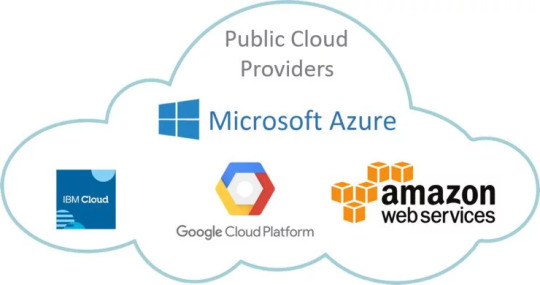
source: http://www.rightcloud.asia
9) Deployment
By the time you reach this step you have prepared almost everything, and you are ready for the migration process. Now you’ve to plan how to do it. Following are the points to be taken under consideration here:
Nominal interruption time
Sequence of migration of applications
Time limit and constant monitoring for a successful migration
Alterations in end-user processes
Preparation requirements
10) Execute the plan and monitor the implementation
Execution is the most crucial step. Make sure that you perform this real challenge with cautions. Begin with a double check on planning, timing, and strategy.
Here are the steps you need to follow for a successful execution:
Data backup – Before migration, you must back up the present servers and data. This would ensure that no information will be lost. Store your data safely and make sure that it can be easily retrieved.
Deployment – Set up the cloud environment. Do the provisioning, connections, and testing of all the individual constituents separately.
Migration of the data – Post-deployment, migrate the present data to the cloud. This process will take time and may require some changes to fit. Test all the connections and ensure that they are working appropriately.
Testing – This final step is very important. Do the testing and rectify errors, if any. After migration of all the data, check that everything is working as estimated. Double check the presence and safety of the data in the environment. You must test it so that the end users do not face any issues while using the app and if any corrections are required, they should be done easily as a part of this testing.
Monitor the implementation – Implement monitoring after successful migration. You should get notifications if any issue arises with the cloud environment to get it fixed in time.
Additional things that you must keep a check on:
1. For an appropriate cloud hosting, scalability is a must. The application that is required to get scaled must be positioned on a load balancer so that it can respond in real-time whenever there is an increased necessity for means. If you are selecting IaaS as your infrastructure, you’ll have to check if the service provider charges extra for this feature. PaaS solutions have a built in scalability to some extent. However, the company providing the infrastructure decides the total cost.
2. For every monitoring, computing and storing system, proper security is necessary. The cloud providers take care for security concerns like avoiding unnecessary traffic outside a particular range from accessing the machines on which your data is stored. They also assure that automatic security updates are applied to their systems to safeguard your data from being susceptible to the latest known security threats. By storing your data in the cloud, you can access it from any device, and make changes remotely.
3. For any assistance, good customer service is needed. You must check if your hosting company assures a certain level of uptime or not. This is because after moving the data and customer-facing applications into the cloud, if you still face downtime, it would result in a huge setback. So, the hosting company must guarantee that this will not happen. You must figure out the automated maintenance schedule, and confirm appropriate and in-time security and software build updates.
4. Coordinate with your cloud provider to stay in agreement with municipalities and software company licenses. When you make your business global, laws in diverse jurisdictions must be followed.
To know more about how to make the right cloud migration services, talk to our cloud experts.
Originally published at softwebsolutions.com on September 18, 2018.
0 notes
Text
Why enterprises need to adopt a multi-cloud strategy
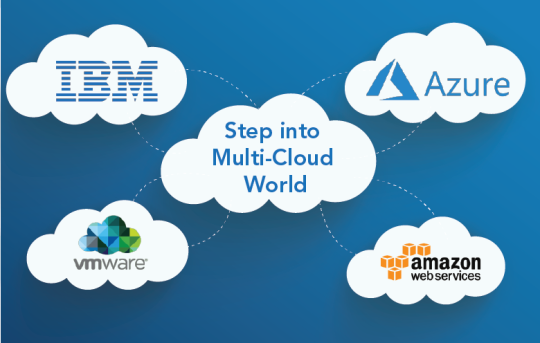
Multi-cloud is the next big thing today that is offering businesses the capability to experience multiple cloud services and build the best infrastructure. Companies now do not need to move between platforms because with a multi-cloud adoption strategy you can bring many technologies together such as AWS, Azure, VMware and more in one system to efficiently meet their business goals. One of the prime reasons why enterprises prefer this approach is to avoid depending on just one cloud vendor for all their cloud-related needs.
“81% of enterprises have a multi-cloud strategy”
– 2018 State of the Cloud Survey, RightScale
There are many types of multi-cloud architectures including re-deployment, cloudification, relocation, refactoring, rebinding, replacement, and modernization for organizations to adopt.
Multi-cloud rebinding
A multi-cloud rebinding is an architecture that is used to route users to the nearest data center when your primary cloud or on-premises data center fails. Basically, this architecture can configure and monitor the status of the service to which they are directing the users, and if the service is not available, it helps to route traffic to another resource.
Let’s see how an application is deployed in a multi-cloud setting:
Figure 1: Multi-cloud rebinding architecture diagram
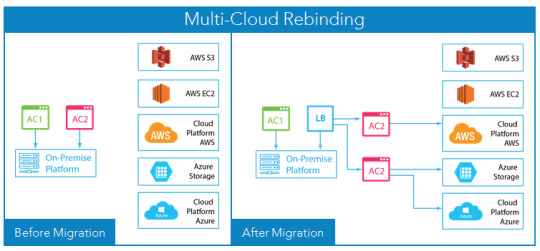
In this architecture diagram, a re-architected application is deployed partially on multiple cloud environments. Here, AC1 and AC2 are two application components hosted on-premises before migration. As both the components are independent integrity units, AC1 remains on-premises while two AC2s are deployed on AWS and Azure for disaster recovery.
Benefits of adopting a multi-cloud solution
1. Ability to mix different delivery models
Multi-cloud allows you to choose from a growing range of services to create a customized solution that best suits your organization. You gain the ability to use mixed delivery models including SaaS (Software-as-a-Service), PaaS (Platform-as-a-Service), and IaaS (Infrastructure-as-a-Service). As well as increase the capability for each existing and new applications and make the decision that best suits your business goals. You can use a combination of platforms including Amazon Web Services(AWS), Azure, Google Cloud Platform, VMware and more. This multi-cloud architecture becomes your base for new business capabilities and functions.
2. Making data management flexible
Many organizations require using different types of data depending on their industry. Multi-cloud can be the best fit for such organization as they require storing data in particular type of cloud while running other workloads in another cloud. When you manage data on multiple clouds, you can be confident that your data will remain available and secure even if one of the cloud hosts fail. For example, an e-commerce business may require hosting data on multiple cloud platforms that best supports digital media such as images, videos, animation, graphics, and more.
Multi-cloud also offers low latency and allows quick data transfer across different platforms, and manages your workloads and services, as it utilizes more than one cloud services, ensuring that your enterprise serves customers without any inconvenience.
Cloud strategy and assessment workshop
The adoption of cloud-based infrastructure by enterprises is increasing greatly. However, a lot of enterprises are still reluctant to adopt a cloud strategy due to lack of skills or knowledge.
Download
3. Avoiding single vendor lock-in
Initially, single cloud vendors led enterprises for a lock-in period that often results in limited flexibility, prolonged proof of concepts, delayed decisions, and costlier outcomes. Such issues would further result in slowing down the business operations and overall fail the organization to meet their business-changing needs timely.
Multi-cloud deployment allows you to get full control over your systems including the power to switch your cloud platforms easily. When you use a mix of private and public cloud platforms, you will be able to match your system needs to your business solutions. With multi-cloud, you can scale down your cloud services to the local server whenever desired and without causing disruptions to your business operations. Such ability will reduce dependency over a single vendor and open the doors to negotiation for favorable agreements.
4. Optimizing cost-effective outcomes
The traditional delivery methods of cloud platform and the scaling efficiencies of multiple cloud services can always be compared. With multi-cloud strategy, you can use your own apps anytime into the cloud and build greater resiliency at a lower price than the previous redundancies would have costed you. You can easily share your workloads across multiple cloud platforms and reduce downtime simultaneously.
Multi-cloud proves to be a cost-effective solution, as enterprises get to analyze and reduce capital expenses related to hardware, server, and systems that have an impact on their business performance and productivity. In short, the multi-cloud solution enables you to scale cloud services at dropping costs – without disrupting your business operations.
5. Added security with multi-cloud
Multi-cloud allows a combination of a private or public cloud platform. For added security, it is advisable that you secure your data in the private cloud while operating other areas of the business using a public or hybrid cloud environment.
Using a multi-cloud architecture will also help you a lower risk of a DDoS (distributed denial-of-service) attack by providing a level of resiliency, which is not possible with a single provider. A DDoS attack is a serious result of several computer systems attacking a server, a website, a network resource or even a cloud hosting. These attacks can be conducted by anyone, including a hacker or even hostile foreign power. For instance, if in case your primary cloud suffers an attack, your workloads can be immediately shifted to other cloud environments.
Insight
All types of cloud are developing, be it public, private or hybrid; therefore huge enterprises can openly embrace multi-cloud service management to meet their divisional operations. Reap many benefits while keeping challenges and risks to a minimum level by adopting a multi-cloud strategy. We are confident that multi-cloud is here to stay and enterprises should adopt it without giving a second thought. Get in touch with our consultant and learn how you can get started.
Originally published at softwebsolutions.com
#Multi cloud strategy#Cloud consulting services#Multi-cloud challenges#multi cloud services#benefits of multi cloud strategy#multi cloud
1 note
·
View note
Text
Enhancing ML Efficiency with Amazon SageMaker

Taking machine learning models from conceptualization to production is complex and time-consuming. Companies need to handle a huge amount of data to train the model, choose the best algorithm for training and manage the computing capacity while training it. Moreover, another major challenge is to deploy the models into a production environment.
Amazon SageMaker simplifies such complexities. It makes easier for businesses to build and deploy ML models. It offers the required underlying infrastructure to scale your ML models at petabyte level and easily test and deploy them to production.
Read our blog to understand A comprehensive guide to Amazon SageMaker
Scaling data processing with SageMaker
The typical workflow of a machine learning project involves the following steps:
Build: Define the problem, gather and clean data
Train: Engineer the model to learn the patterns from the data
Deploy: Deploy the model into a production system
This entire cycle is highly iterative. There are chances that the changes made at any stage of the process can loop back the progress to any state. Amazon SageMaker provides various built-in training algorithms and pre-trained models. You can choose the model according to your requirements for quick model training. This allows you to scale your ML workflow.
SageMaker offers Jupyter NoteBooks running R/Python kernels with a compute instance that you can choose as per the data engineering requirements. After data engineering, data scientists can easily train models using a different compute instance based on the model’s compute demand. The tool offers cost-effective solutions for:
Provisioning hardware instances
Running high-capacity data jobs
Orchestrating the entire flow with simple commands
Enabling serverless elastic deployment works with a few lines of code
Three main components of Amazon SageMaker
SageMaker allows data scientists, engineers and machine learning experts to efficiently build, train and host ML algorithms. This enables you to accelerate your ML models to production. It consists of three components:
Authoring: you can run zero-setup hosted Jupyter notebook IDEs on general instance types or GPU-powered instances for data exploration, cleaning and pre-processing.
Model training: you can use built-in supervised and unsupervised algorithms to train your own models. Amazon SageMaker trained models are not code dependent but data dependent. This enables easy deployment.
Model hosting: to get real-time interferences, you can use AWS’ model hosting service with HTTPs endpoints. These endpoints can scale to support traffic and allow you do A/B testing on multiple models simultaneously.
Benefits of using Amazon SageMaker
Cost-efficient model training
Training deep learning models requires high GPU utilization. Moreover, the ML algorithms that are CPU-intensive should switch to another instance type with a higher CPU:GPU ratio.
With AWS SageMaker heterogeneous clusters, data engineers can easily train the models with multiple instance types. This takes some of the CPU tasks from the GPU instances and transfers them to dedicated compute-optimized CPU instances. This ensures higher GPU utilization as well as faster and more cost-efficient training.
Rich algorithm library
Once you have defined a use case for your machine learning project, you can choose an appropriate built-in algorithm offered by SageMaker that is valid for your respective problem type. It provides a wide range of pre-trained models, pre-built solution templates and examples relevant for various problem types.
ML community
With AWS ML researchers, customers, influencers and experts, SageMaker offers a niche ML community where data scientists and engineers come together to discuss ML uses and issues. It offers a range of videos, blogs and tutorials to help accelerate ML model deployment.
ML community is a place to discuss, learn and chat with experts and influencers regarding machine learning algorithms.
Pay-as-you-use model
One of the best advantages of Amazon SageMaker is the fee structure. Amazon SageMaker is free to try. As a part of AWS Free Tier, you can get started with Amazon SageMaker for free. Moreover, once the trial period is over, you need to pay only for what you use.
You have two types of payment choices:
On-demand pricing – it offers no minimum fees. You can utilize SageMaker services without any upfront commitments.
SageMaker savings plans – AWS offers a flexible, usage-based pricing model. You need to pay a consistent amount of usage in return.
If you use a computing instance for a few seconds, billed at a few dollars per hour, you will still be charged only for the seconds you use the instance. Compared to other cloud-based self-managed solutions, SageMaker provides at least 54% lower total cost of ownership over three years.
Read more: Deploy Machine Learning Models using Amazon SageMaker
Amazon SageMaker – making machine learning development and deployment efficient
Building machine learning models is a continuous cycle. Even after deploying a model, you should monitor inferences and evaluate the model to identify drift. This ensures an increase in the accuracy of the model. Amazon SageMaker, with its built-in library of algorithms, accelerates building and deploying machine learning models at scale.
Amazon SageMaker offers the following benefits:
Scalability
Flexibility
High-performing built-in ML models
Cost-effective solutions
Softweb Solutions offers Amazon SageMaker consulting services to address your machine learning challenges. Talk to our SageMaker consultants to know more about its applications for your business.
Originally published at softwebsolutions on November 28th, 2022.
1 note
·
View note
Text
On-premises to AWS cloud migration: Step-by-step guide

Businesses are rapidly migrating corporate data to the cloud. Based on a report by Thales’ finding, it has doubled in cloud storage usage from 30% in 2015 to 60% in 2022. The figure is steadily increasing as businesses recognize the myriad benefits it has to offer. Moving your data to clouds can help you with:
Increased agility and scalability
Improved performance and reliability
Easy implementation of technologies
Reduced costs
Despite knowing the numerous benefits of cloud migration, concerns about security and hidden maintenance cost prevent businesses from fully embracing it. The optimal solution for addressing these concerns is consolidating all your cloud requirements under one roof, leveraging platforms such as AWS.
Businesses looking forward to migrating existing infrastructure software/ business applications from on-premises to AWS cloud require involvement from stakeholders across all levels of an organization. Therefore, this process requires careful planning and a step-by-step process for successful implementation.

Each migration is unique as business goals of every organization are different. Hence, before aiming for a successful migration to cloud, take time to consider the goals intended to achieve through it. Identify key business drivers and align them with your migration strategy to achieve set goals.
Step1: Migration preparation
The primary objective of the AWS Cloud Adoption Framework is to bring stakeholders together and formulate an action plan that facilitates the transition of the team from cloud goals to actual cloud implementation. In the preparation phase, the following things will be determined, to formulate the right migration strategy from on premises to cloud.
(i) To ensure project success, identify the key stakeholders involved. It includes the teams participating and a designated project manager to lead.
(ii) Connect with each department and have an open discussion about their app usage, pain points, and desired functionalities.
(iii) To ensure compliance and mitigate risk, clearly state the detailed regulatory requirements and security considerations associated with workload, along with any other relevant requirements.
(iv) Perform dependency mapping to gain better visibility into interdependencies of business services and apps.
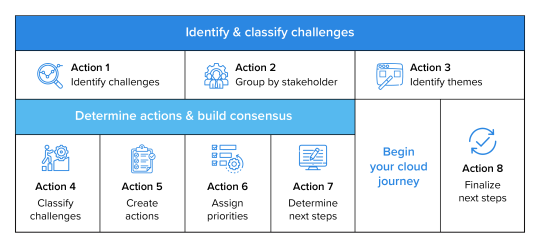
Step 2: Planning and strategizing
Pinpointing the first domino in a complex migration is the true test. When data is scattered across silos, choosing the right starting point can be difficult. Having the right data and the right expertise by your side can help you get through this.
Once you have all the prerequisites with you, the 1st step is to determine which applications to include in the 1st phase of AWS cloud migration strategy. The best approach is to start with applications with lowest number of dependencies. Another approach could be to start with the workloads that have the most overprovisioned, or idle resources.
Industry research suggests that as many as 30% of on-premises servers, both physical and virtual, are Zombies- showing no sign of useful compute activity for 6 months or . If a business rightsizes their cloud deployment on AWS, these workloads will see a great difference in price or performance, once migrated.
The next step is to decide on the migration strategy, which can be anyone of the following options:
a. Lift and shift:
Quickly move your application to AWS with minimal changes, utilizing migration tools for assistance.
b. Partial refactor:
Retain certain aspects of your application while rebuilding other parts for proper functioning on AWS. Alternatively, build additional supporting services alongside the existing application.
c. Full refactor:
Completely rebuild your application for optimal use of AWS Cloud benefits, considering opportunities like transitioning to microservices or adopting a container-based architecture.
d. SaaS or PaaS transition:
Integrate SaaS or PaaS solutions for commodity applications or components, such as email or CRM, to accelerate migration and reduce management overhead.
Deciding on the right team to architect, build, migrate, and manage your cloud can be overwhelming. Hence, many companies opt for AWS migration services to go through the first phases of migration alongside their team.
Step 3: Design
This phase of migration is strategic as it determines the architecture of the AWS cloud infrastructure. While designing the infrastructure, business needs are analyzed, and the best-suited instance type is recommended to maximize cloud investment.
The objective is to deliver a targeted plan approved by all stakeholders as outlined in the initial step. The process usually involves below steps:
a. Examine the performance data across CPU, memory, network, and disk for servers, and across throughput, capacity, and IO for storage.
b. Decide the desired “headroom” (usually 25%) for each asset and assess actual minimum, maximum, and average usage across metrics. Identify the most suitable AWS instance type based on the analysis.
A virtual machine is considered undersized if its CPU demand exceeds 70% for more than 1% of any given hour and oversized if it stays below 30% for more than 1% of a 7-day period.
c. Develop an AWS design, including an architecture diagram and a service list (Amazon EC2 instances, EBS volumes, VPCs, etc.), along with associated costs.
d. Early engagement with security and compliance teams is crucial. Proactive collaboration helps prevent delays and ensures project deadlines are met.
Step 4: Migration and validation
It’s execution stage. Meticulously follow the approved AWS architecture plan and carefully migrate your application and data to the chosen configuration.
Let cloud engineers build approved architecture using AWS CloudFormation.
Further configure each application using Amazon Machine Image (AMI).
Store AWS CloudFormation template and Puppet/Chef scripts in a versioned code repository (Git).
Migrate servers, databases, and data to AWS through internet transfer or AWS migration services for faster transitions.
Conduct initial testing with cloud engineers by repeatedly tearing down/rebuilding infrastructure with AWS CloudFormation.
Other teams test and validate application performance, security, compliance, etc.
Important: When moving data and applications to AWS Cloud, both your old system and the new AWS one will be running at the same time. This can lead to higher cost for that period. Hence, make sure, this additional cost is taken into consideration while formulating AWS Cloud migration strategy. Learn more about the impact of automation on cloud migration.
Step 5: Operate and optimize
The secret to long term success with AWS platform is to keep optimizing. Once migration is completed, there is ample time to address any issues that may not have surfaced during the testing phase. This allows for ongoing improvements to the infrastructure, making it progressively better.
24*7 Support
Before going live, clearly lay down the roles and responsibilities, and list the procedures for common tasks such as instance rebooting, access management, etc. Relying on external AWS migration service providers like Softweb Solutions can help with reducing this additional burden of management.
Cost tracking and analysis
Leverage AWS for real-time billing updates and spending alerts. Optimize cost management by using a comprehensive analysis and governance platform. Your dashboard should offer a unified view of both on-premises and cloud environments, easily accessible by your cloud engineering team for budget oversight. Schedule regular reviews with your team or Managed Services Provider to stay updated on environment costs, especially with AWS introducing new products and services that may impact expenses.
Partnering with an AWS service provider brings expert guidance, streamlined processes, and ongoing support. They’ll navigate the complexities, choose the optimal path, and ensure a smooth, fast, and cost-effective journey to the cloud.
Approach cloud migration strategically
Based on the “Guidebook Understanding the Value of Migrating from On-premises to AWS for Application Security and Performance, Nucleus Research, June 2020” migrating to AWS delivers:

Working with a cloud provider like AWS allows you to access and benefit from powerful hardware, software and services. AWS, or Amazon Web Services, stands as the most extensive and widely embraced cloud platform worldwide, presenting a range of over 200 fully featured services across global data centers. This ensures high availability as well as fast and efficient storage.
Partner with Softweb Solutions for expert implementation of top-tier migration best practices. Transform your workloads and applications on AWS seamlessly, unlocking rapid cloud benefits and modernizing your operations efficiently.
Originally published at softwebsolutions.com on February 21, 2024.
#AWS Cloud Migration#on premise to aws cloud migration step by step#on prem to cloud migration aws#aws cloud migration benefits
0 notes
Text
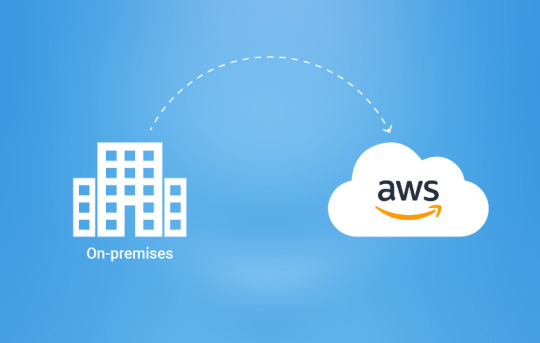
Learn step-by-step how to migrate from on-premises to AWS cloud seamlessly. Increase agility, reduce costs, and optimize performance with expert strategies and best practices. Partner with Softweb Solutions for efficient implementation.
#AWS cloud migration#on premise to aws cloud migration step by step#on prem to cloud migration aws#aws cloud migration benefits
0 notes
Text
Cloud migration guide: Your strategic path to AWS migration
Today’s business world is reverberating with the drumbeat of digital transformation. Organizations across industries sprint to keep pace with evolving customer demands, competition, and ever-shifting technological landscapes.
Adopting Amazon Web Services (AWS) has become a critical catalyst for success in this high-stakes race. IT infrastructure and applications in the cloud require a well-defined AWS cloud migration strategy, one that charts the path to maximizing the transformative power of this technology.
This blog serves as your compass, guiding you through the intricacies of AWS cloud migration and empowering you to start a successful course toward digital dominance.
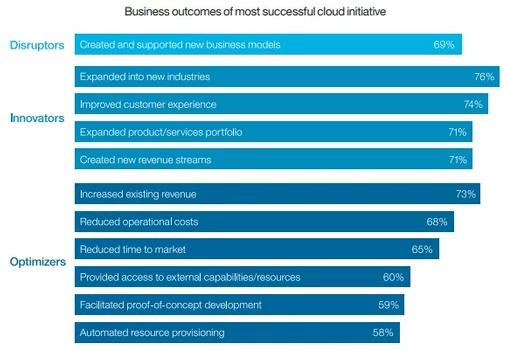
Source: IBM
Cloud migration strategies and their importance
The decision to migrate to AWS is just the first step on your digital expedition. Choosing the right path is crucial, for it affects the pace, cost, and ultimately, the success of your cloud takeover.
But why migrate at all? Why abandon the familiar confines of your on-premises castle for the uncharted territory of the cloud? Consider these treasures that beckon from the cloud:
Agility: Adapt and scale your applications quickly, just like a cloud expert avoiding digital challenges.
Scalability: If you need more servers to manage high traffic, the cloud has plenty available, just a click away.
Cost-efficiency: Ditch the expensive upkeep of on-premises infrastructure. The cloud offers a pay-as-you-go model, like renting a cloud-powered dragon instead of buying your own stable.
Innovation: Embrace the latest cloud technologies and unlock new possibilities, like using a cloud-powered telescope to scan for future business opportunities.
With these riches within reach, who wouldn’t want to join the cloud migration craze? However, navigating the landscape of the seven Rs without understanding their strengths and limitations can lead to detours and missed opportunities. In the next section, we’ll delve deeper into each R, unpacking their individual characteristics and equipping you to chart the optimal course towards your cloud kingdom.
The seven R’s of cloud migration
The seven R’s represent distinct migration strategies with varying degrees of complexity, speed, and long-term impact on your application portfolio. Let’s explore each R in detail, highlighting its purpose, suitability, and potential limitations:
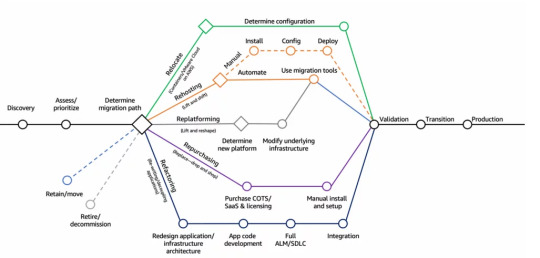
Source: AWS
1. Rehost (Lift and Shift): This rapid and cost-effective option involves directly migrating applications to the AWS cloud infrastructure without significant architectural changes. Think of it as simply relocating your servers to a cloud data center, leveraging its scalability and resilience. However, this approach may limit long-term agility and cloud-native optimization potential.
2. Relocate: If you seek specific AWS features or multi-cloud flexibility, relocating applications to a different cloud platform might be ideal. This approach requires careful planning and compatibility testing but opens doors to specialized services or cost optimization opportunities.
3. Replatform: When existing architecture impedes cloud optimization, replatforming applications allows you to fully utilize cloud-native principles. This approach involves significant reworking to unlock advanced scalability, elasticity, and resilience. However, it demands substantial resources, expertise, and planning.
4. Refactor: For applications where future-proof agility is crucial, refactoring involves building them completely from scratch, embracing serverless technologies and microservices architecture. This most comprehensive approach unlocks future potential but requires intensive resources and planning.
5. Repurchase: Instead of extensive replatforming, you can repurchase outdated applications for cost-effective cloud-native equivalents offering similar functionality. This approach streamlines maintenance, provides modern features, and leverages the inherent advantages of cloud architecture.
6. Retire: This AWS cloud migration strategy targets outdated, underutilized, or incompatible applications. Retiring these applications liberates resources and simplifies your IT infrastructure, while reducing maintenance costs and potential security vulnerabilities.
7. Retain: For stable and compliant applications, retaining them on-premises ensures operational continuity and minimizes disruption. This approach avoids unnecessary migration efforts and allows you to focus cloud resources on strategic priorities.
By understanding the strengths and limitations of each R, you can confidently choose the most appropriate migration strategy for each application in your portfolio. Remember, a hybrid approach is often optimal, tailoring specific R’s to different applications for successful cloud adoption.

Insights
Explore the best strategies to migrate to the AWS cloud
AWS migration refers to the process of moving an organization's IT infrastructure, applications and data to the cloud-based services offered by Amazon Web Services (AWS).
Download
When to use each migration model
Migration strategy: Retire
Use Case: Outdated, underutilized, or incompatible applications
Benefits:
Simplifies infrastructure
Reduces maintenance costs
Mitigates security vulnerabilities
Implementation: Analyze workload dependencies and plan sunsetting process
Migration strategy: Retain
Use Case: Stable and compliant applications needing operational continuity
Benefits:
Minimizes disruption
Avoids unnecessary migration effort
Focuses resources on strategic priorities
Implementation: Assess compliance requirements and optimize on-premises environment
Migration strategy: Rehost (Lift & Shift)
Use Case: Rapid and cost-effective migration with minimal architectural changes
Benefits:
Leverages cloud scalability
Resilience
Reduces data center complexity
Implementation: Refine infrastructure sizing and optimize resource utilization
Migration strategy: Relocate
Use Case: Specific cloud feature requirements or multi-cloud flexibility
Benefits:
Accesses specialized services
Optimizes costs across platforms
Enhances future flexibility
Implementation: Evaluate target platform compatibility and plan data migration strategy
Migration strategy: Repurchase
Use Case: Cost-effective cloud-native alternatives for outdated applications
Benefits:
Streamlines maintenance provides modern features
Unlocks cloud-native advantages
Implementation: Identify suitable SaaS or PaaS offerings and plan application integration
Migration strategy: Replatform
Use Case: Significant performance and agility gains, but with greater reworking
Benefits:
Unlocks advanced scalability
Resilience
Future-proofs architecture
Implementation: Invest in development resources and plan application modernization roadmap
Migration strategy: Refactor
Use Case: Complete rebuild for future-proof agility and cloud-native optimization
Benefits:
Enables microservices architecture
Unlocks serverless technologies
Maximizes cloud potential
Implementation: Secure dedicated resources and prioritize development expertise
AWS migration benefits
Beyond simply transitioning your infrastructure, migrating to AWS delivers tangible benefits that empower your business to thrive in the digital landscape. These advantages stem from several key areas:
1. Unmatched agility: Adapt and respond to market shifts with lightning speed. AWS enables rapid scaling up and down of resources, effortless deployment of new applications, and real-time adjustments to meet shifting demands. This agility allows you to capitalize on fleeting opportunities and outmaneuver competitors.
2. Infinite scalability: Break free from the constraints of on-premises limitations. AWS offers boundless scalability, seamlessly accommodating spikes in activity, resource-intensive projects, and future growth. Need more servers? They’re available with a click. Require advanced analytics capabilities? Specialized services readily await. Your ambitions are no longer confined to infrastructure.
3. Optimized cost management: Ditch the burden of upfront investments and unpredictable expenses. AWS embraces a pay-as-you-go model, where you only pay for the resources you consume. This granular control enables precise cost optimization, eliminating wasted capacity and over-provisioning. Invest intelligently in cloud resources that directly drive business value.
4. Innovation as a constant: Embrace the cutting edge and propel your digital transformation. AWS constantly introduces groundbreaking services and features, opening doors to previously unimaginable possibilities. From artificial intelligence and machine learning to serverless computing and data analytics, the cloud fuels disruptive ideas and propels you ahead of the curve.
5. Global reach and resilience: Extend your digital borders and connect with customers like never before. AWS boasts a global network of data centers, ensuring exceptional performance and unparalleled redundancy regardless of your users’ location. This global reach strengthens your brand, unlocks new markets, and bolsters your disaster recovery capabilities.
6. Unwavering security and compliance: Prioritize data security and safeguard your reputation. AWS prioritizes multi-layered security controls and adheres to the highest compliance standards. Sensitive data is protected with rigorous measures, building trust with customers and minimizing risk.
Conquering cloud migration challenges
With the seven Rs as your compass, it’s time to chart your course through the inevitable challenges that arise on any AWS migration journey. By anticipating these roadblocks and proactively addressing them, you can ensure a smoother and more successful transition to the cloud. Here are some key obstacles to keep in mind:
1. Complexity and skill gap: Navigating the vast and ever-evolving AWS ecosystem can be daunting, especially for organizations with limited cloud experience. This complexity, coupled with a potential skill gap in your team, can lead to inefficient resource utilization, suboptimal architecture choices, and delayed timelines.
Strategize: Address this challenge by investing in training and certifications for your IT staff, partnering with experienced AWS consultants, and leveraging readily available online resources and documentation. Prioritize understanding core AWS services and best practices to make informed decisions throughout your migration.
2. Security considerations: Migrating sensitive data and applications to the cloud requires meticulous attention to security protocols and compliance regulations. Failure to secure your assets can lead to data breaches, reputational damage, and hefty fines.
Fortify: Implement robust access controls, data encryption, and threat detection mechanisms. Choose security-focused AWS services and adhere to industry best practices. Partnering with AWS security experts can significantly mitigate risks and ensure compliance.
3. Vendor lock-in: While leveraging the full range of AWS services can offer significant benefits, over-reliance on proprietary solutions can create an unhealthy dependence on a single vendor. This can limit your future flexibility and potentially increase costs.
Diversify: Maintain a balance between utilizing valuable AWS services and keeping some workloads on-premises or considering multi-cloud strategies. This approach enhances flexibility and bargaining power in the long run.
4. Cost management: While AWS offers flexible pricing models and optimization tools, managing cloud costs effectively requires ongoing monitoring and proactive adjustments. Uncontrolled spending can quickly eat into your budget and undermine the cost-effectiveness of your migration.
Optimize: Implement strategies like reserved instances, cost tagging, and resource auto-scaling to control expenses. Regularly review your cloud bills and identify areas for optimization. Remember, continuous cost management is the key to maximizing the financial benefits of the cloud.
Beyond migration: Embracing the digital horizon with Softweb Solutions
By embracing this roadmap, you’ll propel your business forward with agility, efficiency, and innovation. The cloud isn’t just a destination; it’s a powerful platform for growth and transformation. Don’t let questions cloud your judgment. Let Softweb Solutions be your guide to sail you through.
Originally published at https://www.softwebsolutions.com on February 14, 2024.
#AWS migration#AWS cloud migration#Cloud migration guide#AWS cloud#AWS migration benefits#AWS consultants#7 Rs Strategy
0 notes
Text
Migrate confidently to the cloud with Softweb's expert consulting services. Our AWS migration solutions ensure a seamless transition, optimize performance, and provide ongoing support. Gain peace of mind with our guidance and secure your free consultation today!
1 note
·
View note
Text
Discover the crucial steps for effective cloud migration, from planning objectives to execution and monitoring. Ensure a smooth transition for your organization's IT infrastructure.
1 note
·
View note
Text
Unlock the secrets of AWS cloud migration with the 7 Rs strategy. Explore benefits, challenges, and solutions. Let Softweb Solutions navigate your journey to digital dominance.
1 note
·
View note
Text
Delve into the transformative role of cloud computing in IoT, big data, AI, and 5G, driving efficiency, collaboration, and agility in modern enterprises. Discover how cloud adoption accelerates innovation and reshapes business landscapes.
1 note
·
View note
Text
Learn how cloud technology bolsters healthcare data security, with insights into encryption, AI-driven solutions, and employee training. Discover best practices for compliance with HIPAA regulations and safeguarding sensitive patient information.
1 note
·
View note
Text
Discover how integrating artificial intelligence (AI) into testing processes revolutionizes software development, improving accuracy, speed, and coverage while freeing QA testers to focus on strategic tasks.
1 note
·
View note